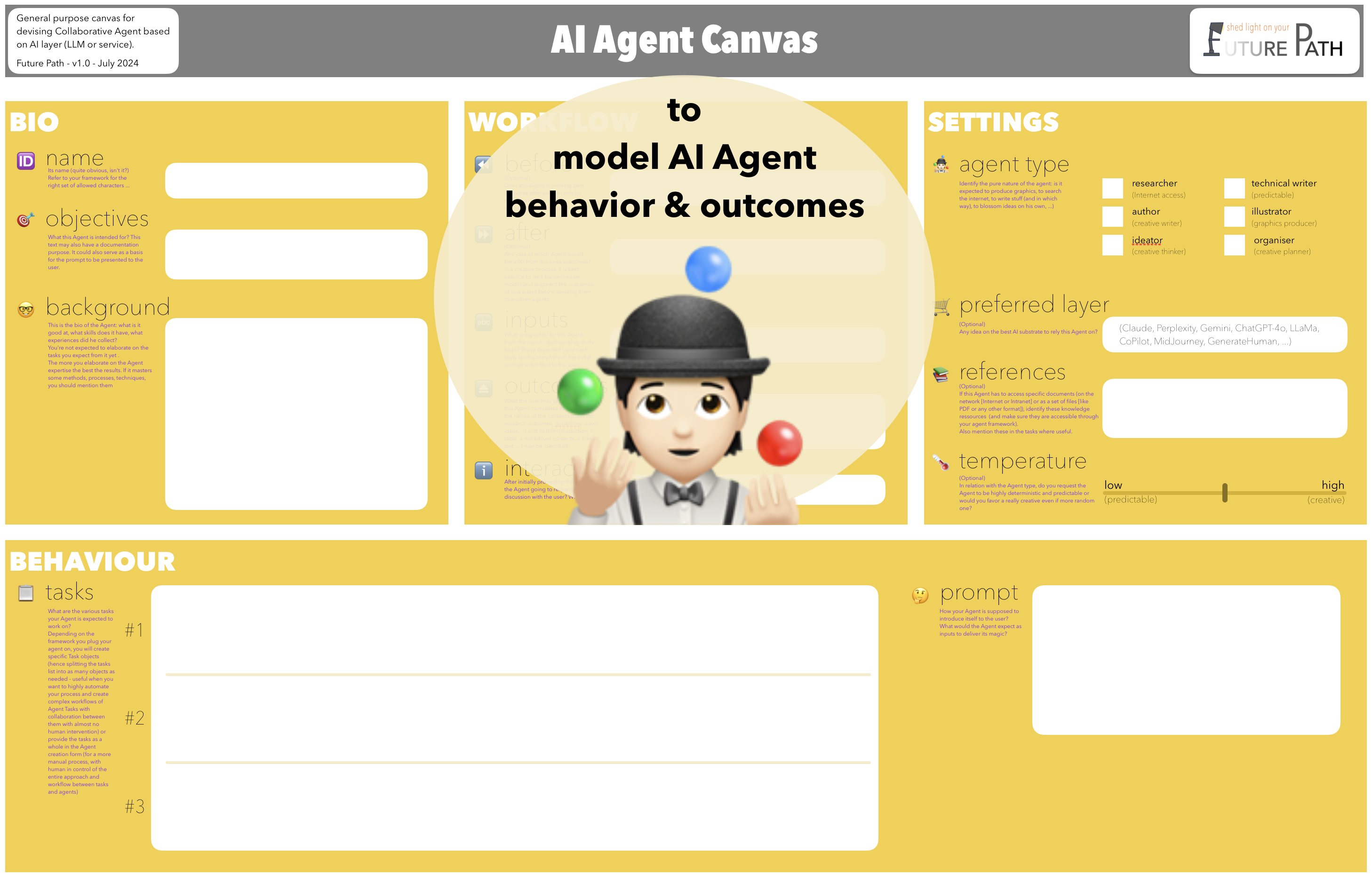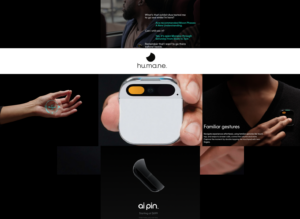🇫🇷 version française en deuxième partie 🇫🇷
Abstract: we introduce here a canvas to help anyone designing genAI Agents. This canvas is a work in progress. You may use it at will (we’d love to hear you about it). We intend to release this canvas under Creative Commons by the end of the year (although we start as a copywrited material during the beta period).
This post jumps directly into the subject without further explanation (which will be properly done in the next posts)
The canvas under (your) review
So you want to create you own custom Agent (or GPT, or bot or assistant). You can do that perfectly well with your preferred LLM (assuming it offers this possibility).
We hereby propose you an agnostic canvas to support your brain dumping (creating such an agent is really a sort of expertise mining and extraction, isn’t it?).
It has been designed to be self-explanatory (thanks to the purple comments directly embedded into the canvas). Nevertheless, in the next posts we’ll introduce the 2 phases (design then unit test), highlight the overall structure and clarify some elements. We’ll also go through a complete example.
Once collected all your feedback, we’ll release the canvas in Creative Commons.
🇫🇷 version française 🇫🇷
Résumé : nous vous proposons ici un canevas (ou aussi Template en bon français) pour vous aider à composer vos propres genAI Assistants. Il s’agit d’une version préliminaire à un passage sous Creative Commons d’ici la fin de l’année. Nous prendrons en compte vos retours pour en intensifier l’intérêt et la portée.
Cet article va droit au but sans fioritures : le canevas est téléchargeable et utilisable directement. Des articles à venir détailleront l’utilisation de ce canevas.
Un canevas pour vous...
Ainsi, vous souhaitez créer votre propre agent personnalisé (ou GPT, ou bot ou assistant). Vous pouvez très bien le faire dans l’interface de votre LLM préféré (sous réserve qu’il offre cette possibilité bien entendu).
Nous vous proposons donc un canevas agnostique de la plateforme pour vous aider dans cette tâche de «vidange cérébrale» (créer un tel agent est vraiment une forme d’extraction d’une expertise, non ?).
Ce canevas a été conçu pour être autodescriptif (grâce aux commentaires violets directement intégrés au canevas). Toutefois, dans les posts à venir, nous présenterons les deux phases (conception puis tests unitaires), mettrons en évidence la structure globale et préciserons certains éléments. Nous examinerons également un exemple complet.
Une fois que nous aurons recueilli tous vos retours, nous publierons le canevas sous licence Creative Commons.

![Lire la suite à propos de l’article [Et si demain…] …nos IA parlaient à notre place ?](https://futurepath.fr/wp-content/uploads/2025/02/human-eye-peek-through-keyhole-into-online-digital-world-1-300x180.jpg)

![Lire la suite à propos de l’article [Et si demain…] Dieu existe… Il est sur 7,83Hz](https://futurepath.fr/wp-content/uploads/2024/12/technologybg7-scaled-e1763832782551-300x200.jpg)